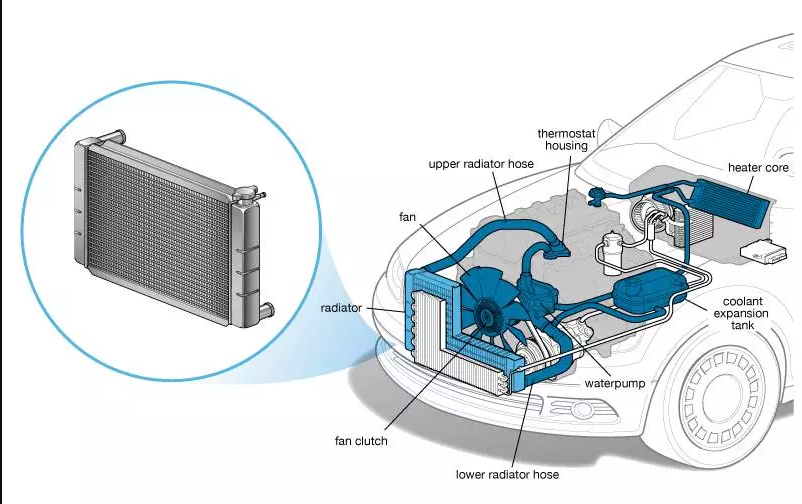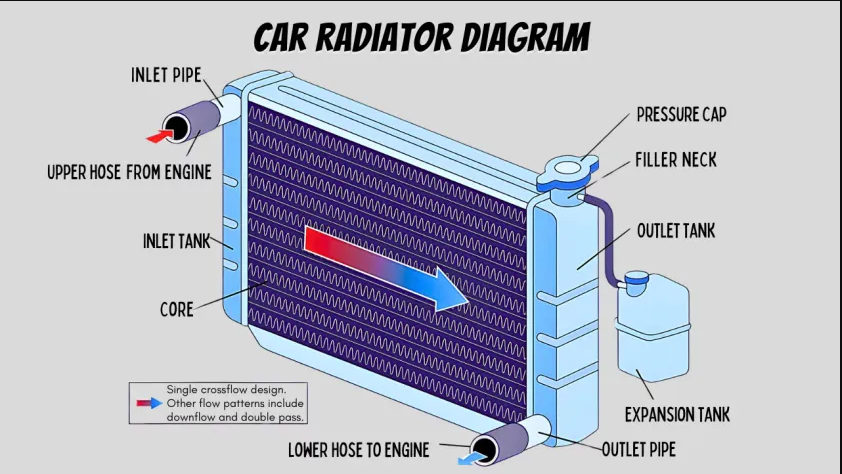
A clogged radiator can cause serious issues for your vehicle, leading to overheating and potential engine damage. Understanding the signs of a clogged radiator and knowing how to fix it can save you time and money in the long run. This article will guide you through the symptoms, causes, and solutions for a clogged radiator.
Signs Your Radiator is Clogged
1. Overheating Engine 🌡️
If your engine is consistently running hot or overheating, it could be a sign that your radiator is clogged. The radiator's primary function is to cool the engine coolant, and if it's blocked, it can't do its job effectively.
2. Coolant Leaks 💧
Noticing puddles of coolant under your vehicle? A clogged radiator can cause coolant to back up and leak from the overflow tank or radiator cap.
3. Discolored Coolant 🌈
Check the color of your coolant. If it's rusty or has debris floating in it, this could indicate a clogged radiator. Clean coolant should be a clear or slightly colored liquid.
4. Poor Heater Performance ❄️
If your vehicle's heater isn't working as well as it used to, a clogged radiator might be the issue. The heater relies on the engine coolant to generate heat, and if the coolant flow is restricted, the heater's performance will suffer.
5. Reduced Coolant Flow 🚫
When your radiator is clogged, the flow of coolant through the system is reduced. This can be checked by observing the coolant flow through the radiator cap or using a flow meter.

How to Fix a Clogged Radiator
1. Flushing the Radiator 🧼
A radiator flush is the most common method to clear out blockages. This involves draining the old coolant, flushing the system with a radiator cleaner, and then refilling it with fresh coolant. Make sure to follow the manufacturer's instructions for the correct procedure.
2. Using a Radiator Cleaner 🧴
Specialized radiator cleaning products can help dissolve and remove buildup inside the radiator. Follow the instructions on the product label for the best results.
3. Inspecting and Replacing Hoses 🔍
Sometimes, the issue might not be the radiator itself but the hoses connected to it. Inspect the hoses for any signs of wear, cracks, or blockages, and replace them if necessary.
4. Professional Inspection 🛠️
If you're unsure about the condition of your radiator or unable to fix it yourself, it's best to take your vehicle to a professional mechanic. They can perform a thorough inspection and recommend the best course of action.
FAQ

Q: How often should I flush my radiator?
A: It's generally recommended to flush your radiator every 30,000 miles or every 2-3 years, depending on your vehicle and driving conditions. Always refer to your vehicle's owner manual for specific maintenance schedules.
Q: Can I drive with a clogged radiator?
A: Driving with a clogged radiator is not advisable. It can lead to engine overheating and potentially severe engine damage. It's best to address the issue as soon as you notice the symptoms.
Q: What causes a radiator to become clogged?
A: Common causes of a clogged radiator include the buildup of rust, debris, and sediment in the coolant. Using the wrong type of coolant or not changing the coolant regularly can also contribute to clogging.
Q: How can I prevent my radiator from getting clogged?
A: Regular maintenance is key to preventing a clogged radiator. This includes using the correct type of coolant, performing regular coolant flushes, and inspecting the radiator and hoses for any signs of wear or damage.
Q: How do I know if my radiator needs to be replaced?
A: If flushing and cleaning the radiator do not resolve the overheating issue, or if there are visible signs of damage such as leaks or corrosion, it may be time to replace the radiator. A professional mechanic can help you determine if a replacement is necessary.
Understanding the signs of a clogged radiator and knowing how to address the issue can help keep your vehicle running smoothly and prevent costly repairs. Regular maintenance and prompt attention to any symptoms will ensure your radiator and cooling system remain in optimal condition.
For more car maintenance tips and information, visit our website and check out our other articles. Stay informed and keep your vehicle in top condition!
🌟 Keep your engine cool and running smoothly! 🌟